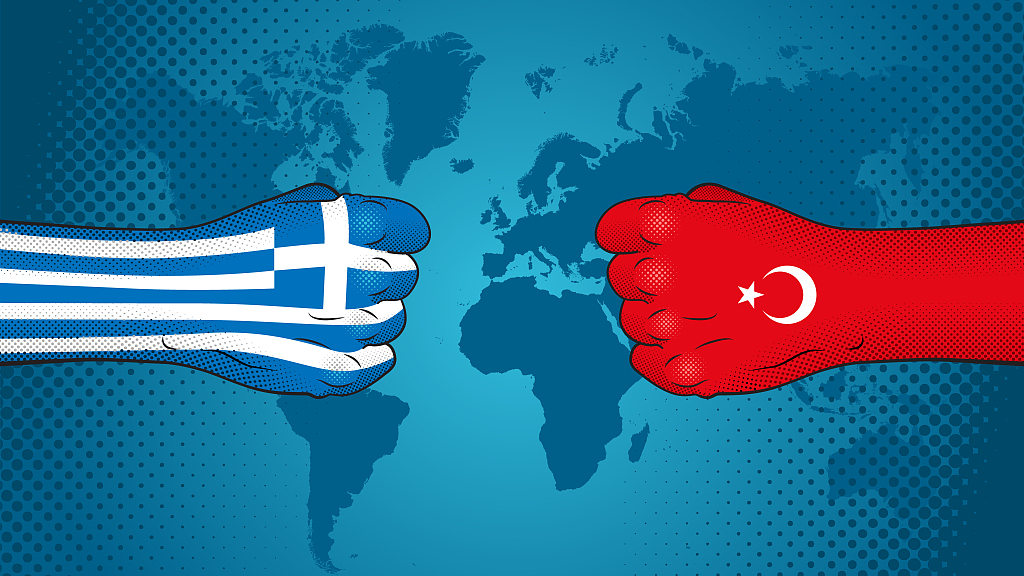The military balance between Greece and Turkey is of great importance as relations between the two countries have deteriorated so sharply that a conflict in the Aegean has become a conceivable possibility.
As a result, the military balance between Athens and Ankara may determine who controls the geostrategically important Aegean Sea. Both sides are taking steps to enhance their military capabilities with new equipment.
To turn the balance of power in their favor, both Grece and Turkey are seeking to enhance their military capabilities on the land, sea, and air.
Background
Historically, Greco-Turkish relations experience prolonged periods of tension and rapprochement. Despite several attempts to eliminate the possibility of military confrontation between the two, the rivalry has a habit of returning.
Between 1821 and 1832, Greeks fought for their independence against the Ottoman Turks. The modern Turkish state was likewise born amid a conflict with Greece, during the Greco-Turkish War fought between 1919 and 1922.
Relations improved in the 1930s when both states signed multiple treaties of friendship and in 1952 Greece and Turkey joined the NATO alliance. This period of detente lasted until the mid-50s when tensions escalated over Cyprus.
In 1974, Greco-Turkish relations took a nosedive when the Turkish military invaded Cyprus and annexed a northern portion of the island. The division of the island between the Republic of Cyprus which is recognized by the international community and the Ankara-backed Turkish Republic of Northern Cyprus remains a source of tension.
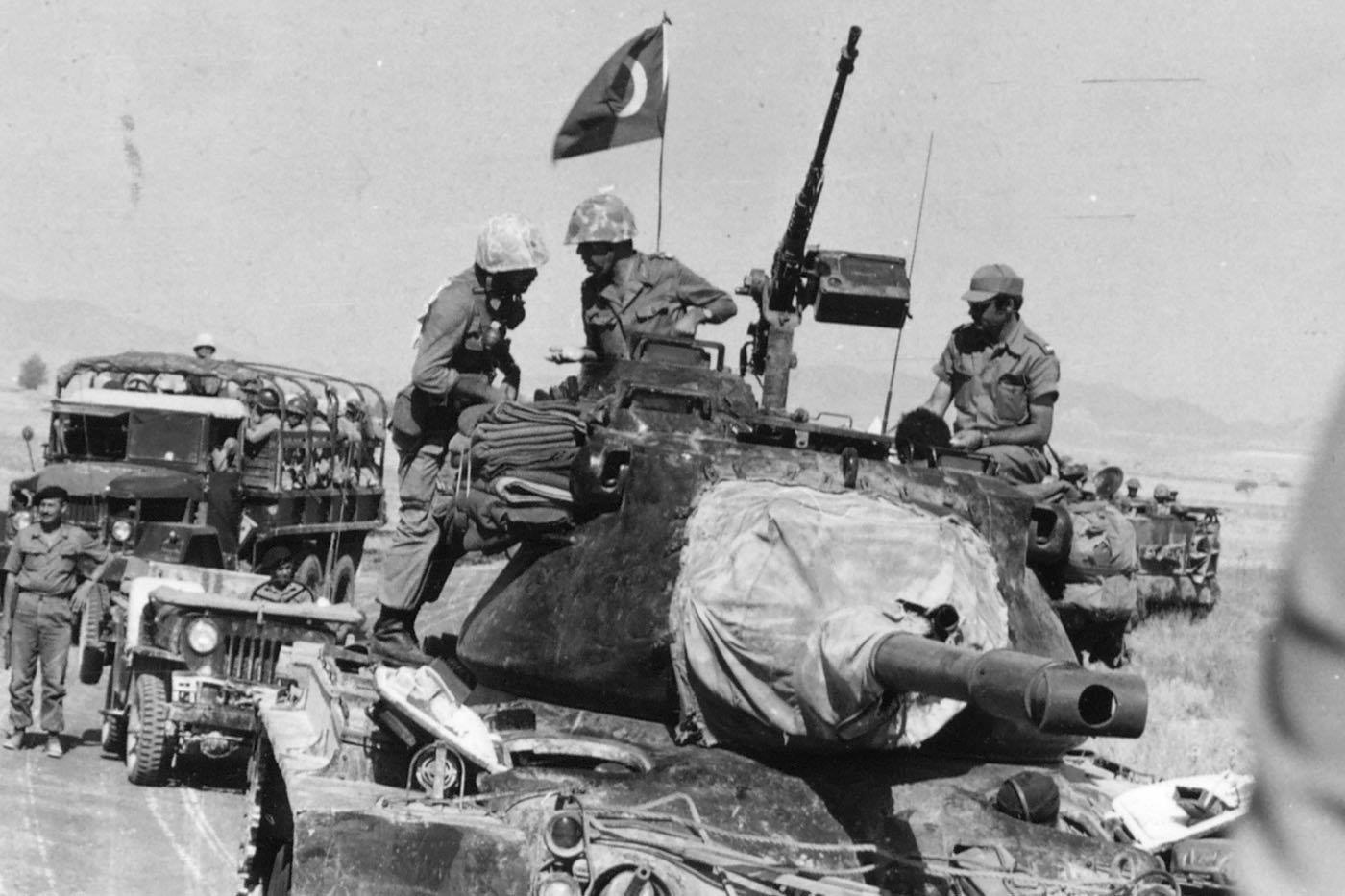
Another attempt at detente was made in 1988. Turkish leader Turgut Ozal met with his Greek counterpart Andreas Papandreou to begin confidence-building measures. Dialogue failed the following year.
In the 1990s, Greece and Turkey nearly went to war over a pair of small uninhabited islets in the Aegean. Both sides deployed military assets on and around the islets (called Imia by the Greeks, and Kardak by the Turks). Mediation by the US helped prevent a war.
1999 marked a period of detente between Greece and Turkey. That year, Greece supported Turkey’s candidacy for European Union membership at the Helsinki summit. This period of detente lasted until the mid-2010s when relations steadily worsened.

Current situation: aggressive rhetoric and military buildup
A number of disputes could lead to a military confrontation in the near future. Foremost, these are contested maritime boundaries, the sovereignty of Greece’s easternmost islands, and divided Cyprus.
The rhetoric of Turkish President Recep Tayyip Erdogan has highlighted the possibility of Turkish military action in the Aegean. In September Erdogan threatened Greece that Turkish forces “may come suddenly one night”, when discussing sovereign Greek islands he insisted Greece was “occupying”.
This kind of rhetoric is not a recent development. During a speech in January 2019, Erdogan quoted the lyrics of a Turkish folk song, saying that he would “throw the Greeks into the sea.”
Greek Prime Minister Kyriakos Mitsotakis has accused Turkey of “extreme aggressive rhetoric” and of “unacceptable claims that challenge Greek sovereignty.”
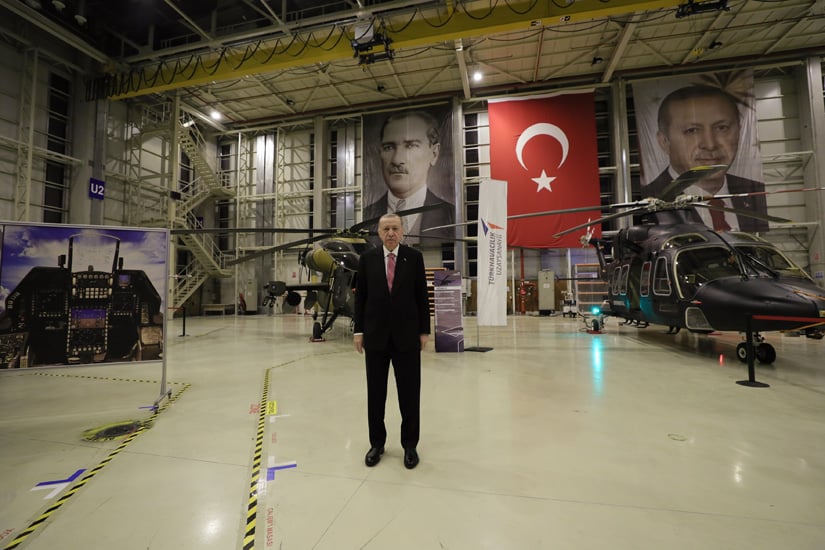
Manpower
Both the Greek and Turkish militaries rely on conscription for manpower. Military service is mandatory in Greece for males aged between 19 and 45. Mandatory military service lasts 12 months. In Turkey, men are required to complete their mandatory service between the ages of 21 and 41. Conscription in Turkey likewise lasts 12 months, with shorter 6-month requirements for university graduates.
According to sources, Greece’s total number of active military personnel is between 130,000 to 142,700. Turkey has a much larger force of 425,000. In fact, Turkey has the second-largest standing force in NATO, after the US.
Greece has a larger reserve force of 220,500 personnel, versus 200,000. However, Turkey has a larger paramilitary force that could be called up to support regulars. Turkey’s paramilitaries number 150,000, whereas Greece has 35,000.
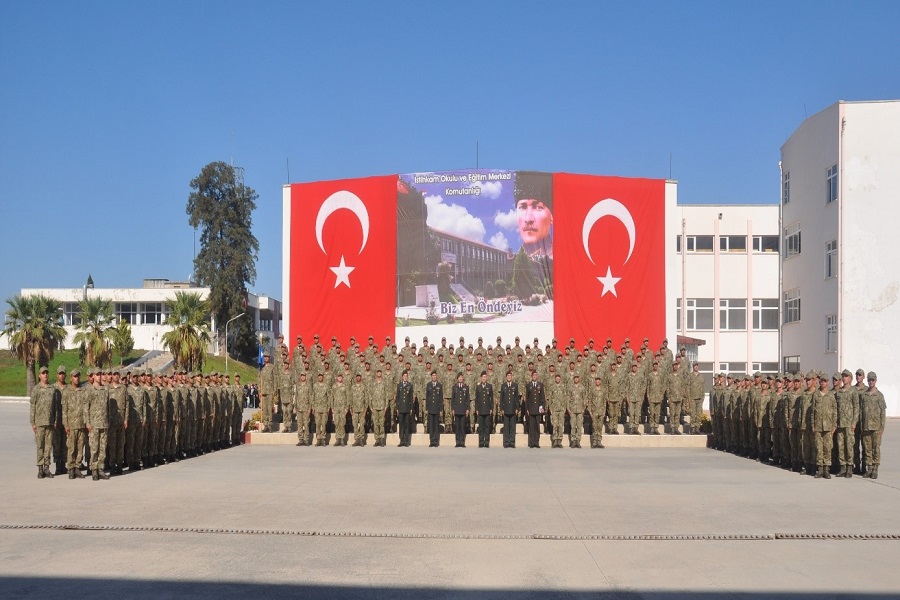
Economy and military budget
In recent years, Athens and Ankara have both signaled intentions to increase defense spending. The availability of open-source data on the exact figures can be limited, but it is possible to assess broad trends.
Greece is one of the few NATO members to spend the targetted 2% or above of its GDP on defense. Greek expenditure on military acquisitions alone is expected to reach €1.5 to 2 billion per year, between now and 2028.
According to Global Firepower’s (GFP) Military Strength Ranking index, Greece’s total defense budget is $6 billion. This makes Greece the 33rd highest military spender in the world.
Ankara has also indicated it will spend more on its armed forces. This is to support increased Turkish military operations in Northern Syria and Libya, as well as Turkey’s interests in the Aegean.
Last year, Turkey announced that it would up its military budget to $9.69 billion in 2022. This would account for 5.05% of Turkey’s GDP. According to GFP’s index, Turkey is the world’s 24th-highest military spender. Meanwhile, World Population Review places Turkey as the 18th-highest spender.
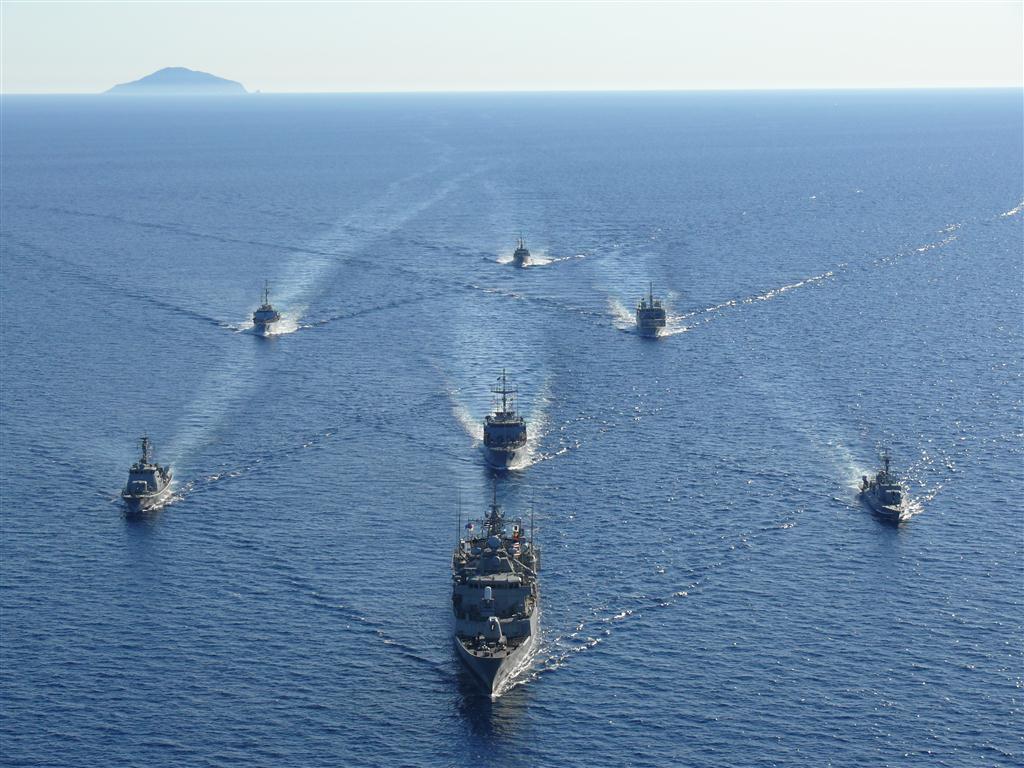
Military-industrial complex
Turkey’s defense sector is far more developed than Greece’s. Over the past two decades, Turkey’s military export business has reportedly grown by nearly 1,200%. Last year, defense sector sales totaled $10.1 billion, and exports accounted for $3.2 billion
In addition to revenue generated by exporting, this means that the Turkish military has access to a range of domestically produced equipment.
Currently, the Turkish defense industry has become best known for its drones. The domestically produced Bayraktar TB2 unmanned combat aerial vehicle (UAV) has proven itself to be particularly effective in Ukraine and the Armenia-Azerbaijan conflicts. These would certainly be used in a potential conflict scenario with Greece.
Greece’s defense sector has generally lagged behind and the Hellenic Armed Forces (HAF) are primarily dependent on military exports from Germany and France. In fact, between 2007 and 2012, Greece was the biggest importer of military equipment in the EU.
However, since 2020, the Greek defense sector has shown some signs of revitalization. Greek defense companies are set to participate in 5 of the 16 projects carried out by the European Defense Industrial Development Program.
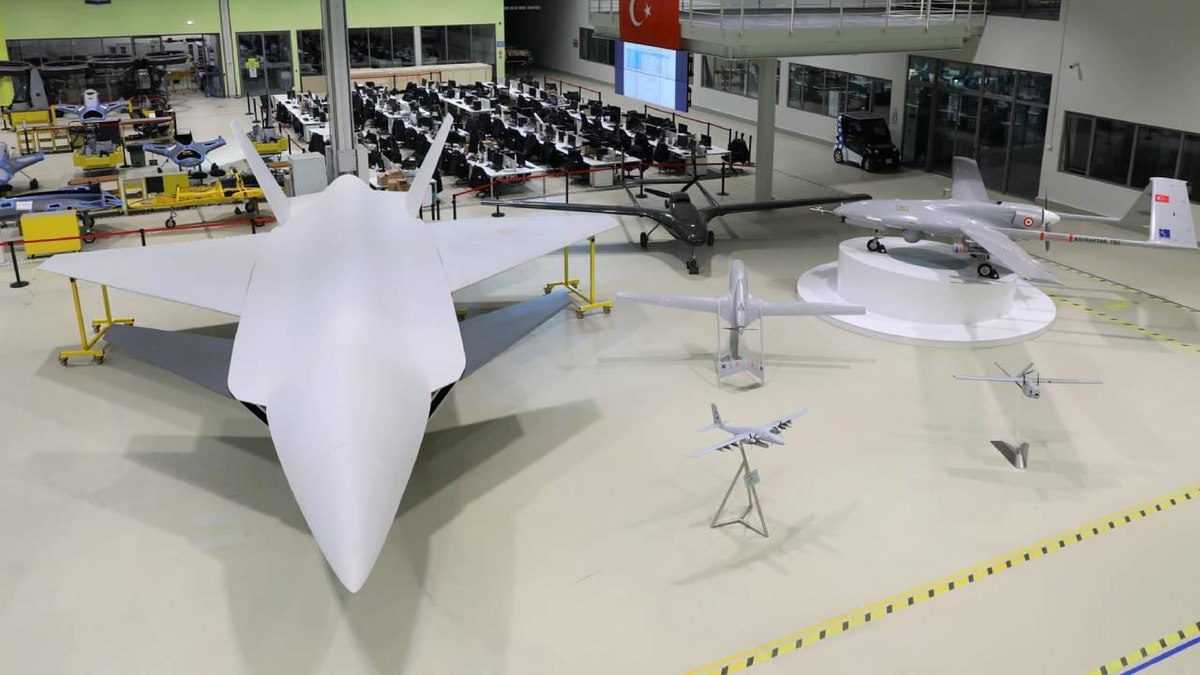
Air
Quantitatively, Turkey has an airpower advantage. Turkish forces possess approximately 1,057 aircraft, versus 633 Greek aircraft.
In terms of fighter aircraft, an essential element for securing air superiority, the quantifiable differences are much smaller. Greece has 188 aircraft and Turkey has 205. Both militaries have been seeking to augment their airforces with more advanced aircraft.
Greece has ordered six more Rafale fighter jets from France, set to arrive in 2024. The order will bring the total number of Rafales in the Hellenic Air Force up to 24.

Greece may also position itself to purchase the Lockheed Martin F-35, an advanced fifth-generation multirole combat aircraft developed by the US. The acquisition would likely take place after 2028.
Turkey was a partner in the F-35 program and was set to acquire 100 of the F-35A models, but was kicked out of the program after purchasing the Russian-built S-400 air defense system
Both Greece and Turkey operate the US-built F-16 Fighting Falcon as their main fighter aircraft. Greece has 154 and Turkey has 243. The F-16 first flew in the 1970s, but several modernization and upgrade options exist. The Greek government is lobbying Washington to halt further sales of the F-16 to Ankara.

Turkey is planning to replace the F-16 with the domestically produced TAI TF-X, which is set to make its maiden flight in 2025.
Greek pilots might enjoy a qualitative advantage over their Turkish counterparts. HAF pilots have a very good reputation within NATO and have won the prize for NATO’s Best Warrior twice in a row, in 2019 and 2020.
The Turkish Air Force has reportedly been “crippled” by purges of its officer corps and pilots, which have been carried out by Erdogan’s government since the 2016 Turkish coup d’état attempt.
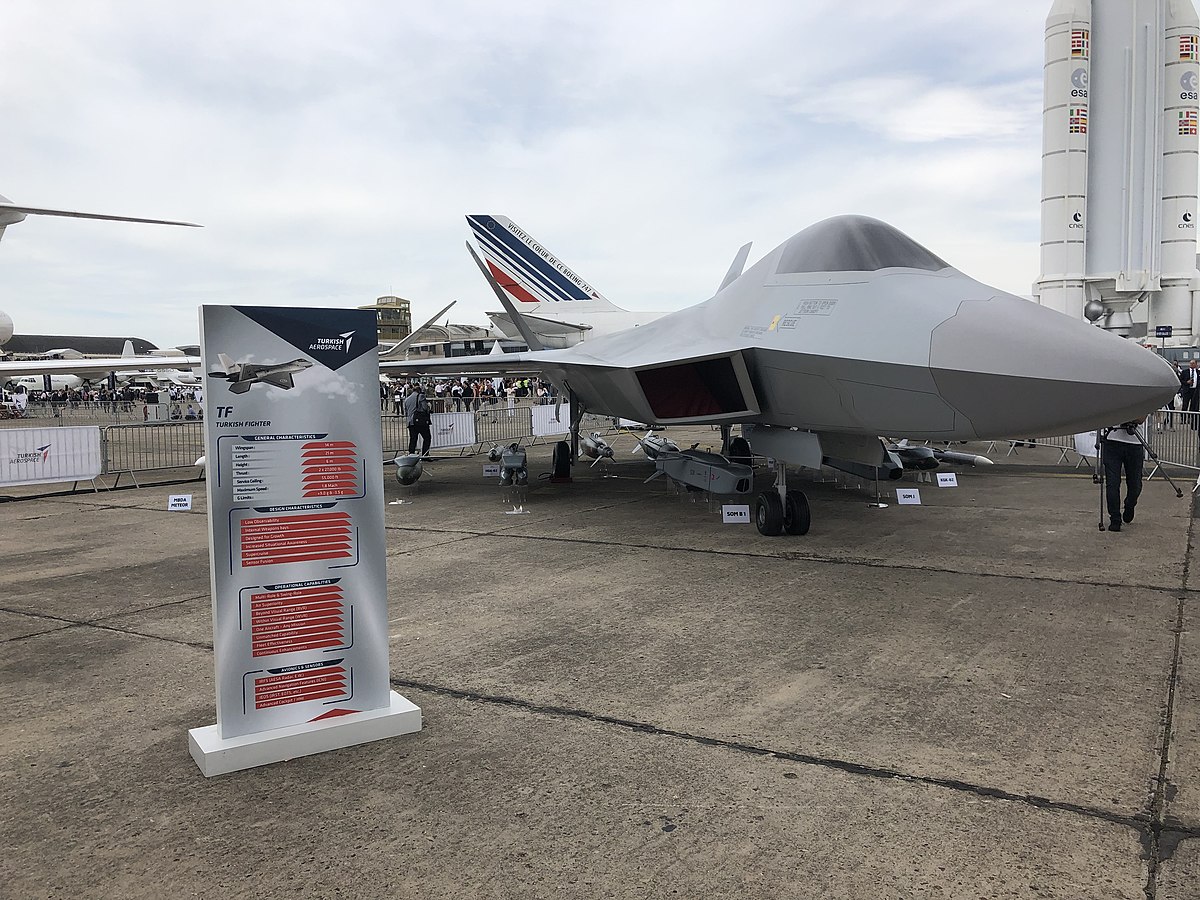
In a potential struggle for air superiority, one would have to consider the quantitative advantage of Turkey versus the probable qualitative advantage of Greece. Pilots in both air forces have faced each other in multiple non-lethal dogfights over the past few decades.
In terms of air defense systems, Greece operates the US-designed Patriot PAC III surface-to-air missiles (SAM) together with the older Russian S-300. To boost detection capabilities, the Hellenic Air Force has ordered Kronos Grand mobile high power (GM HP) radar from Leonardo, which will be deployed in Crete.
Turkey controversially opted to field the S-400 SAM system it purchased from Russia. Turkey also uses the domestically produced Hisar (“Fortress”) SAM system for its air defenses.
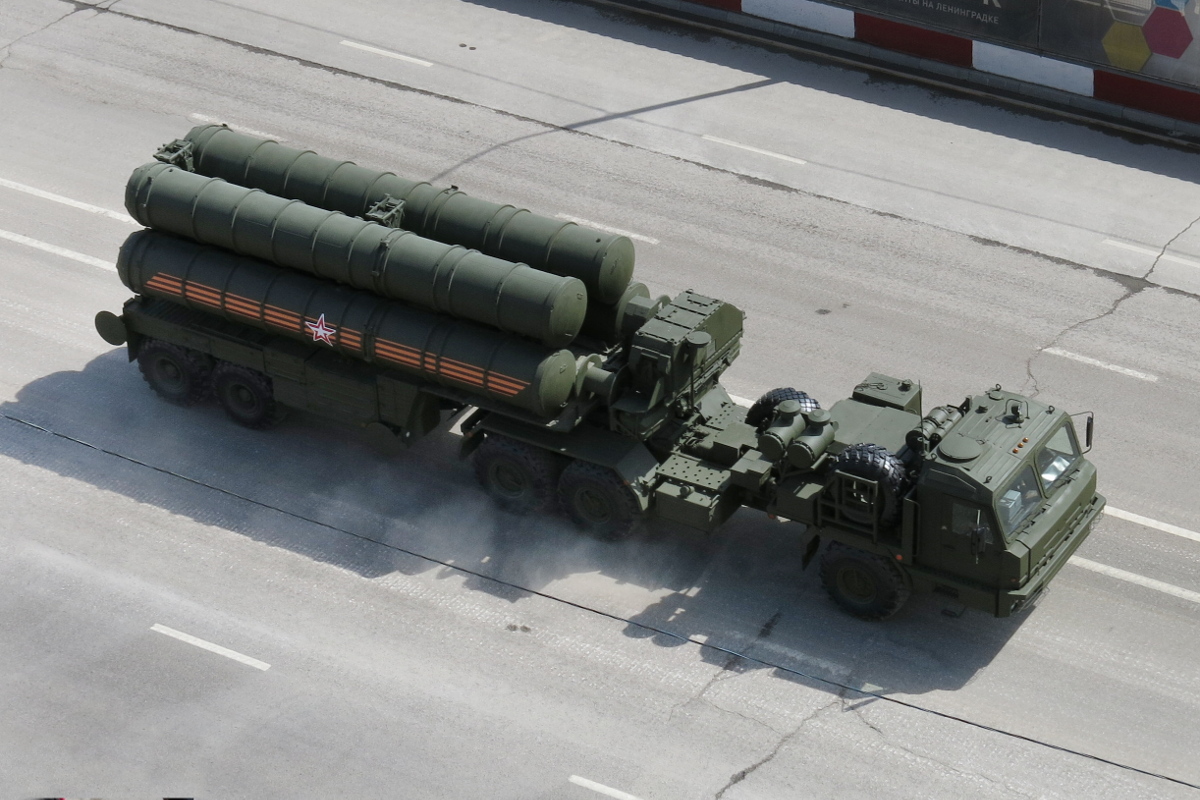
Sea
The quantitative difference between Greek and Turkish naval power is relatively small. Greece has a total of 120 naval vessels, whereas Turkey has 156.
The Greek government has made plans to upgrade and modernize the navy since 2019. The Hellenic Navy currently has 13 frigates and 11 submarines, as well as a number of smaller patrol craft.
There are plans to fill the navy’s gap in Corvettes with at least three or four new vessels to be supplied by 2026. Several companies have offered their designs, including Naval Group with the Gowind 2800, Fincantieri with the FCX-30 (an Al Zubarah-class variant), and Damen with the SIGMA 10514HN.
Greece is also planning to replace older vessels with three French-built FDI frigates, designed by the Naval Group. In 2025, two Standard-1 FDI frigates will enter service, and a third Standard-2 configuration frigate will be delivered in 2026. The option for a fourth frigate also exists.
In addition to larger vessels like corvettes and frigates, the Hellenic Navy will also look to procure smaller military vessels, like patrol boats and rigid inflatable boats (RIBs). Acquiring more logistic support vessels is another priority.
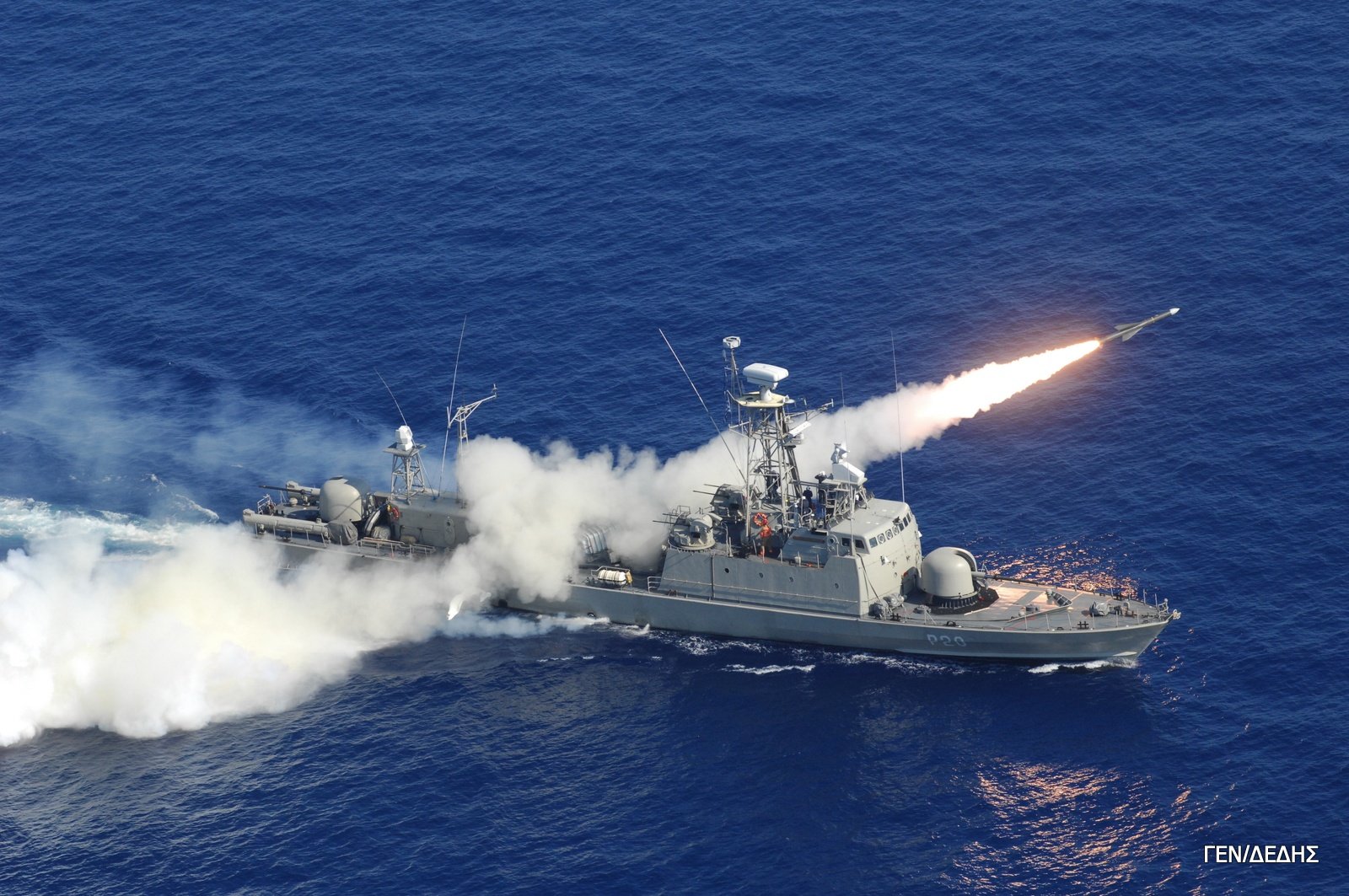
The Turkish Naval Forces have 16 frigates, 12 submarines, and 10 corvettes. Turkey has three more mine vessels than Greece with a total of 11. Turkey plans to expand its maritime military capabilities to meet the demands of its Blue Homeland doctrine.
Turkey’s TCG Anadolu amphibious assault vessel is a centerpiece of Turkey’s maritime modernization efforts. It is an amphibious assault vessel that can be configured as a short take-off and vertical landing (SVTOL) aircraft carrier.
The TCG Anadolu has also been touted as the “world’s first UAV carrier“. In fact, Turkey switched its role to a UAV carrier after its acquisition of the F-35 fell through. In this way, Turkey may capitalize on the effectiveness of its drone program at sea.
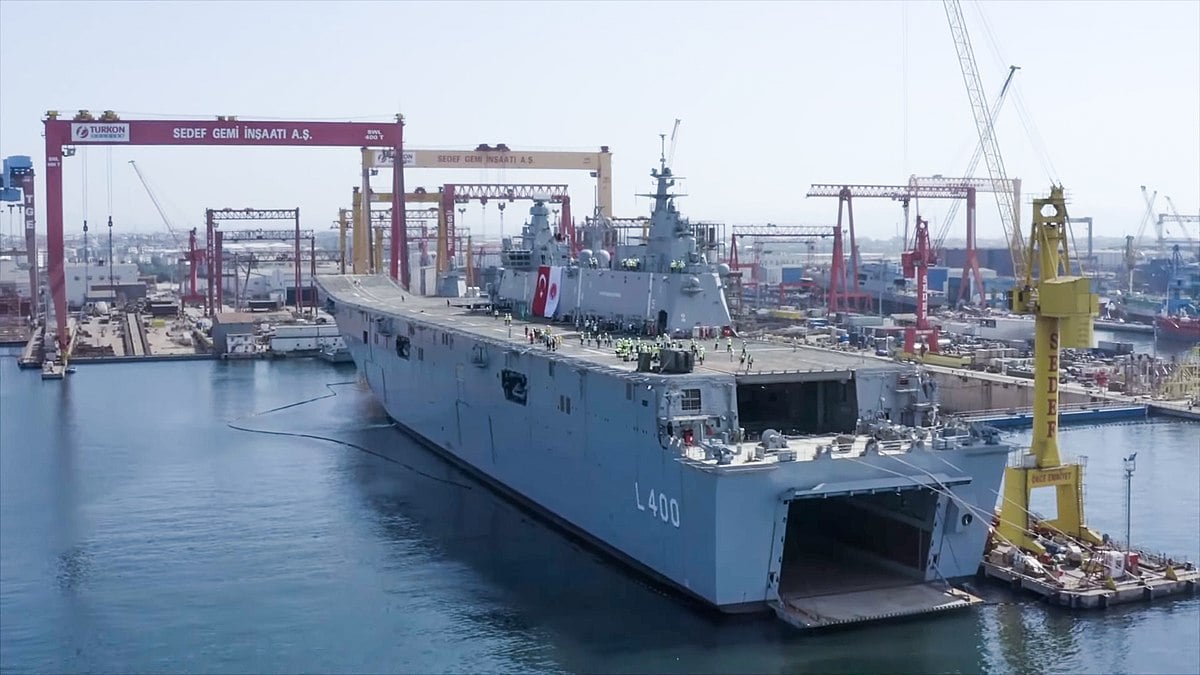
The upgraded Gabya-class (Oliver Hazard Perry) frigates form the backbone of the Turkish Navy, as well as the newer and more advanced Barbaros-class frigates.
Turkey is set to receive six type-214 submarines from German defense firm ThyssenKrupp. Additionally, Anakara has announced the production of the domestically produced STM500 submarine, by Turkish firm STM.
In terms of maritime capabilities, Greece and Turkey are quite closely balanced. The speed at which new vessels are acquired over the next decades will certainly play a role in determining the maritime balance.
Turkey enjoys a slight numerical advantage over Greece. However, the Hellenic Navy might benefit from better-trained personnel. According to the University of Nicosia, 88% of Hellenic Navy personnel are professionals, compared to only 29% of Turkish personnel.
Land
Turkey’s quantitative advantage over Greece is most pronounced on land. Turkey has more tanks than Greece at a ratio of nearly 3:1 (3,022 Turkish, versus 1,243 Greek). Both sides have some of the largest tank forces in Europe.
The Hellenic Army operates the German-designed Leopard 2A6 HEL and Leopard 2A4/GR as its main battle tanks (MBTs). There are 353 of these Leopard models in service, with a variety of more outdated MBTs also in service.
Similarly, the Turkish Land Forces rely on the German Leopard 1 and Leopard 2 tanks. There are 674 of these in service. In 2023, the Turkish army is expecting to receive the first two Altay tanks, developed and built domestically in Turkey.
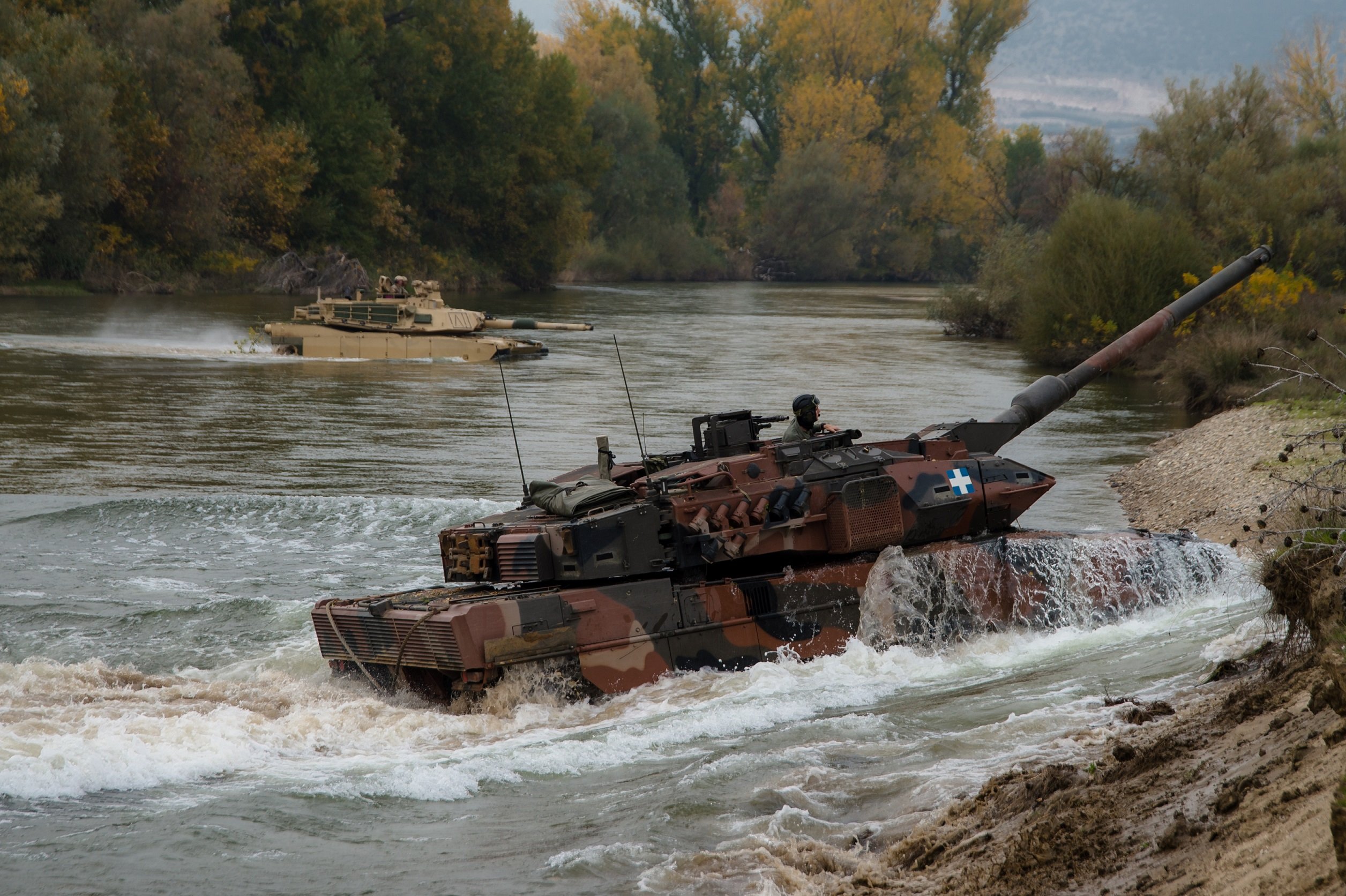
Turkey also has more armored vehicles in general, such as infantry fighting vehicles (IFVs) and armored personnel carriers (APCs). These are typically used to transport mechanized infantry and provide armored support. Though less heavily armored than tanks, they offer greater mobility.
Greece is currently in the process of replacing its aging fleet of BMP-1 IFVs with the German-made Marder 1A3. In terms of APCs, the Hellenic Army fields just under 500 of the domestically produced Leonidas IIs and just under 2,000 American-designed M113A1/1G and M113A2 vehicles.
Turkey produces a large number of APCs and IFVs itself, including the FNSS ACV-15 and the FNSS PARS III. The FNSS PARS III comes in 6×6 and 8×8 wheeled configurations.
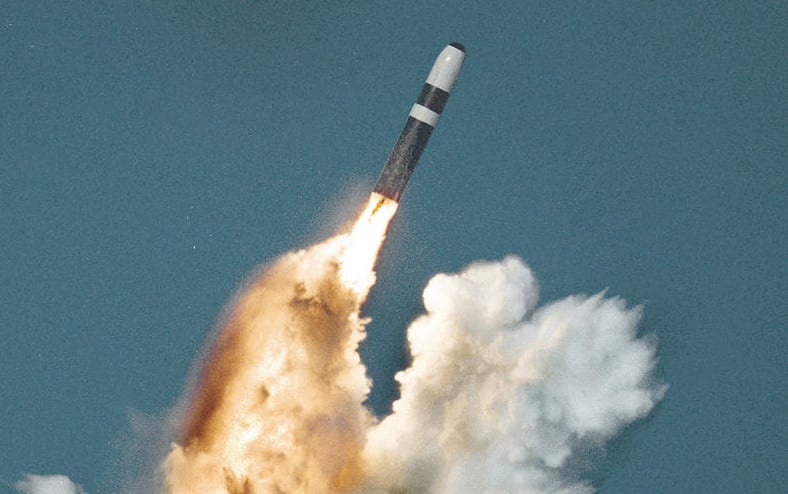
The Turkish military has more artillery firepower to bear. Turkey has 956 self-propelled artillery pieces and 1,189 towed artillery pieces. Greece has 590 and 669, respectively. Turkish artillery may be especially effective when used in tandem with drones to increase accuracy.
Earlier this month, Turkey test-fired its new Tayfun (Typhoon) missile over the Black Sea. President Erdogan has insisted that these missiles have the range to hit Athens and most of Greece.
In terms of troop quality, it is a mixed picture. A greater proportion of the Greek army is professional. 52% of Greek soldiers are professionals, whereas only 23% of Turkish army personnel are career soldiers.
On the other hand, Turkish army units have far more recent military combat experience than their Greek counterparts. Turkish soldiers have been deployed on the ground in Syria since 2016, where they have gained experience fighting the Islamic State (ISIS) and more frequently the Kurdish YPG forces.
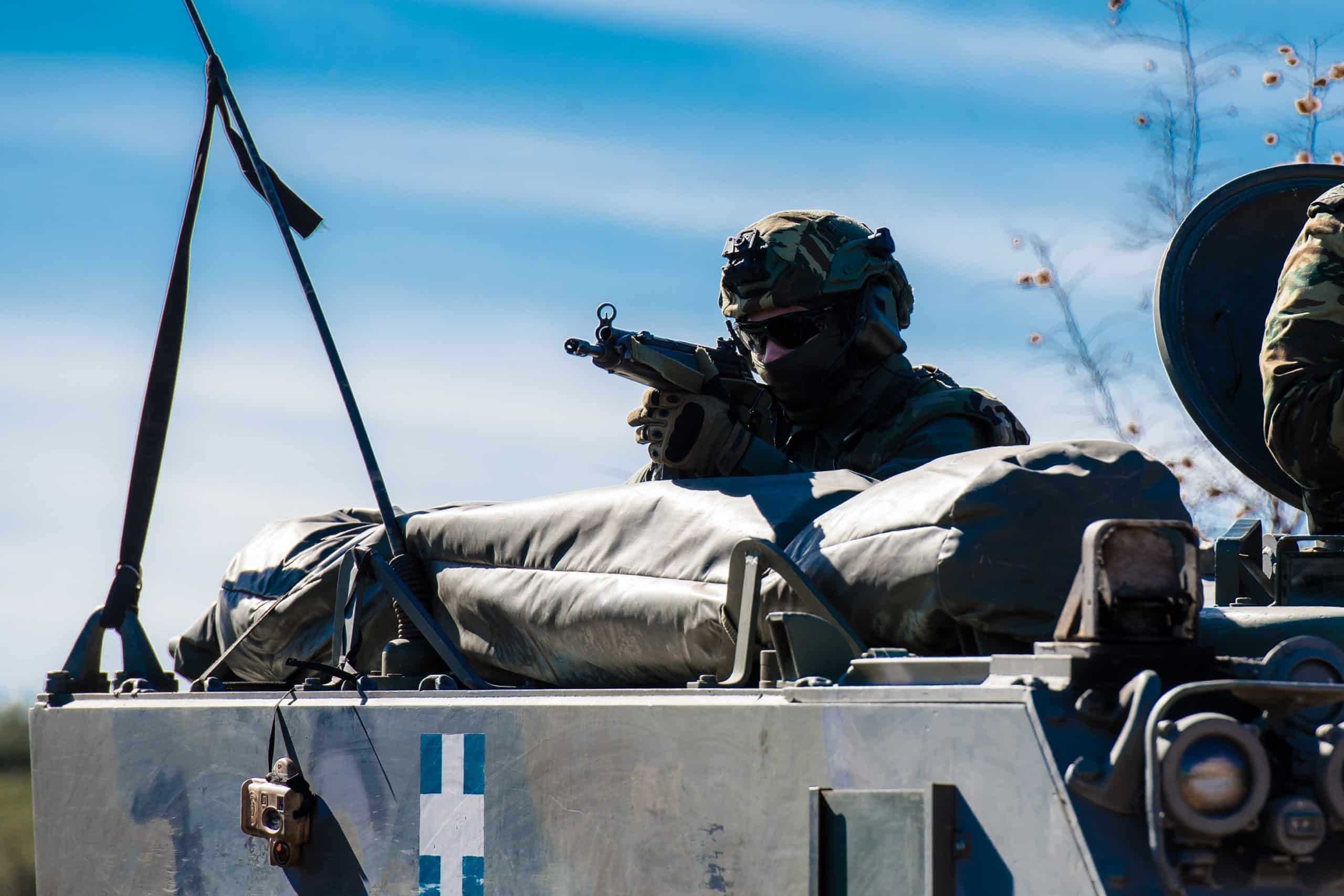
Source: Greek Reporter
